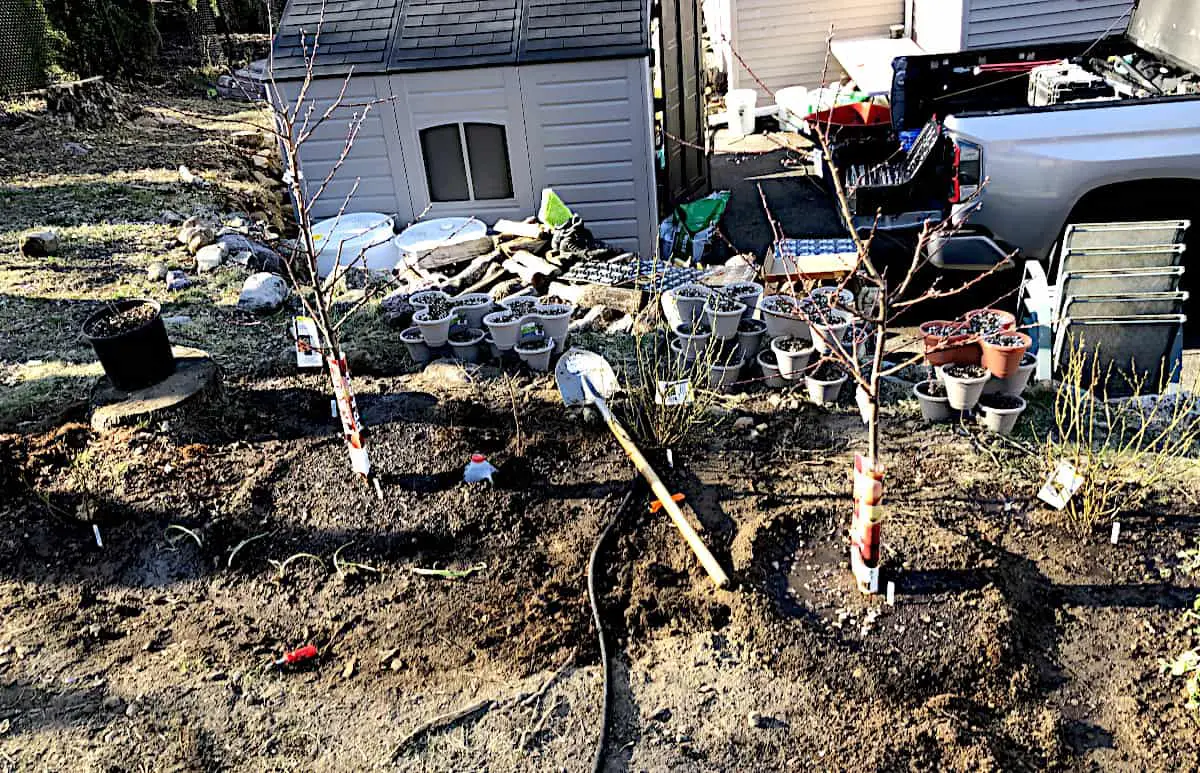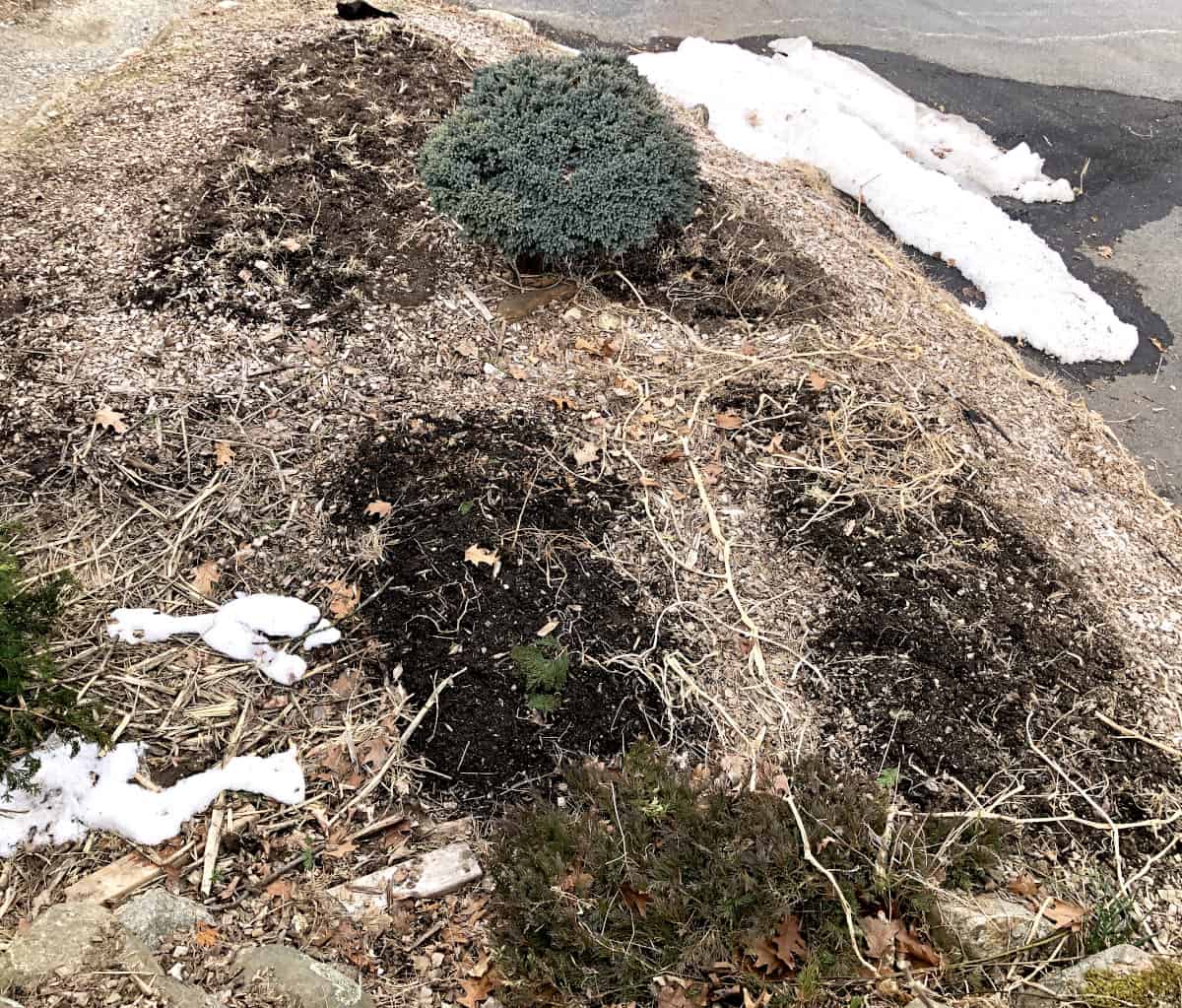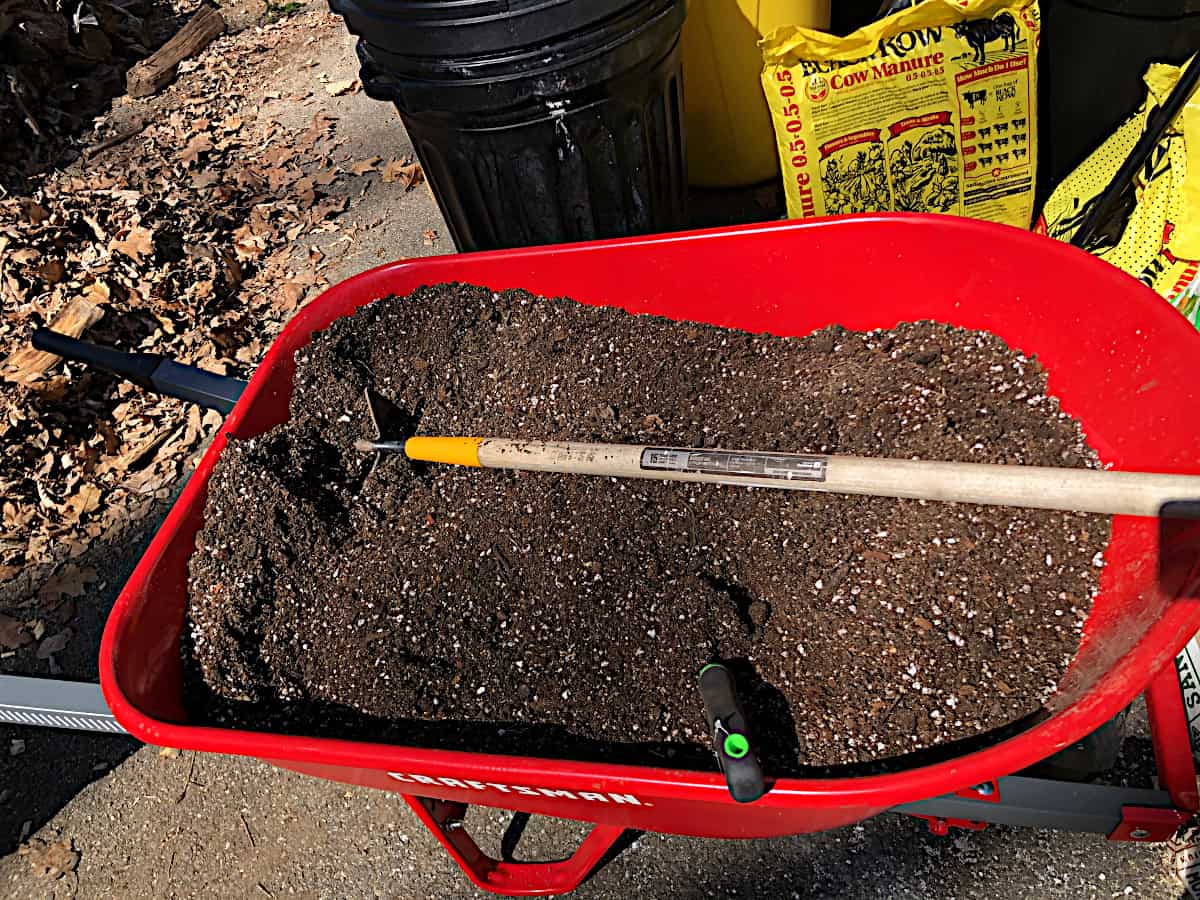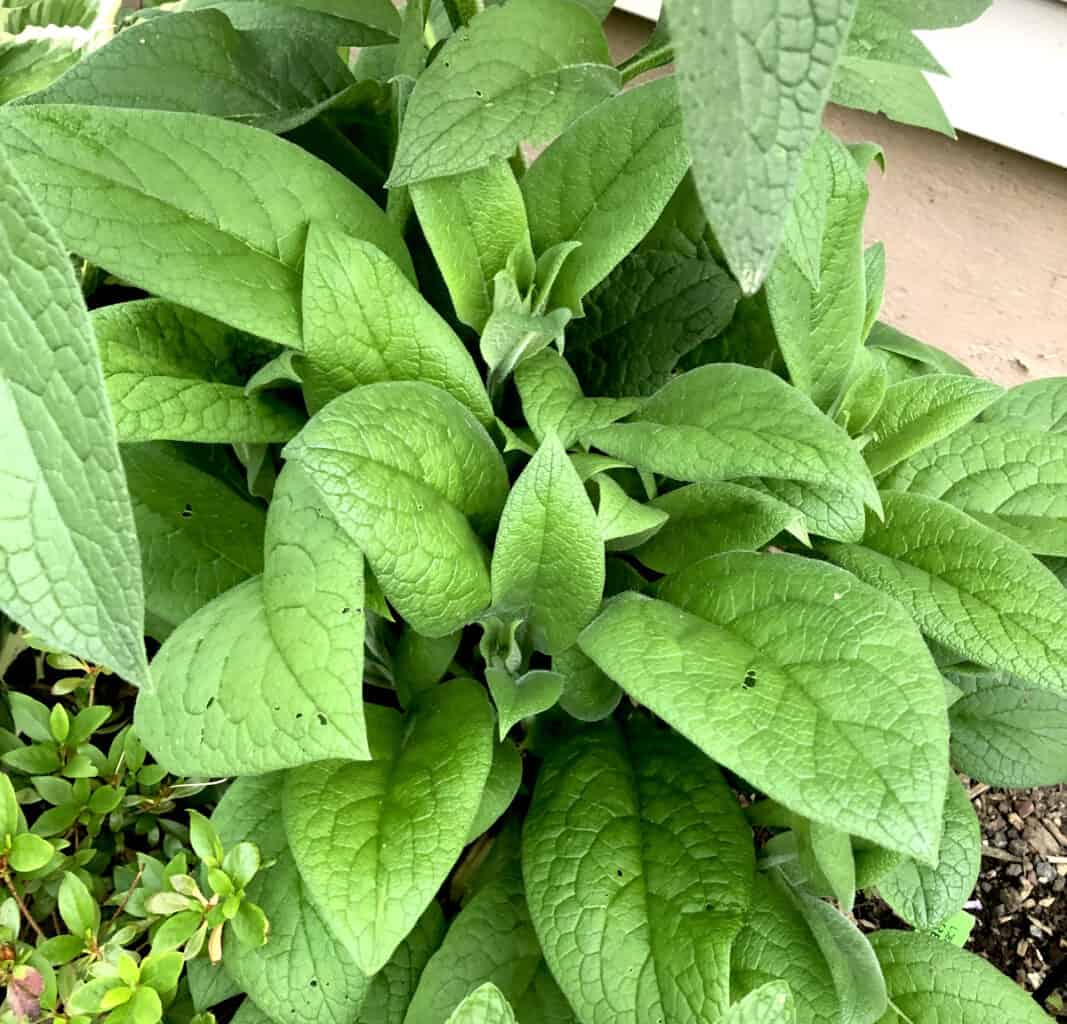There are several ways to improve garden soil. The first thing to get the gardener in the right direction to choose to improve the garden soil is to know what the problem is. Then find the right solution for improvement. I garden on loamy soil, so that’s a good start. But some pieces of my property look like brought soil to maintain the slope. Let’s just say my soil needed nutrition and aeration. Once I was able to name the problem, I was able to find the solution to make my soil fetial and airy.
This is how to improve garden soil
- Amend the soil organic matter like compost, aged manure, leaf mold, egg shells, and wood ash
- Grow cover crops when the beds are bare for longer periods of time
- Add worms and worm castings to your soil
- Amend the soil with peat moss, coco coir, perlite, or vermiculite
- Mulch the top of the soil
- Grow dynamic accumulators in your garden such as comfrey, borage, nettles, yarrow, sorrel

What are soil amendments?
Soil amendments are soil conditioners or products added to the soil to improve its physical quality or fertility. Amendments help improve water retention, drainage, fertility, aeration, and water absorption in soil.
When to use soil amendments
Soil amendments are used when the soil needs physical quality or fertility improvement.
How are amendments used?
Soil amendments are used to break up and aerate the ground to improve the structure. Some are applied to the surface of the soil and left there. Others are to be applied on top of the soil and then turned over, or incorporated with the soil evenly.
What organic matter to use to improve garden soil
To improve garden soil using organic matter, use compost, aged and fully composted animal manure, straw, leaves, leaf mold, peat moss, coco coir, and wood by-products like sawdust, wood chips, and bark mulch.

How to amend garden soil with organic matter
Some organic matter is to be used mixed in with your garden soil, others should be used to layered on top of the soil. Compost, leaf mold, aged animal manure, peat moss, and coco coir, can be worked into the soil. These will add nutrition, aeration, lightness, and better water retention. These are fully composted and will feed your soil, worms, and plants. Use these amendments to improve clay soil, soil with poor nutrition, and poor water retention.
Organic matter that should be used to cover the surface of the soil is wood chips, leaves, straw, and bark mulch. Sometimes these can be also added to the bottom of garden beds like in raised bed gardening as a weed barriers and as bed fillers. They will also feed the soil as they decompose over time.
What cover crops to use to improve garden soil
Cover crops that help with soil improvement include tillage radish, daikon radish, clover, alfalfa, ryegrass, oats, winter rye, sorghum, beans, and peas.
How to use cover crops to improve garden soil
To use the best cover crop for your garden, address the needs the soil has and choose the cover crop accordingly. Prepare the seeds, then sow the seeds in the garden evenly by the broadcasting method. Use a rake the mix the seeds with the soil and water well. Let the cover crop grow and water as needed. After your cover crop grew, use as instructed or intended. The cover crop then can be incorporated into the soil when about 5-6 inches tall using a garden fork or shovel. Then the cover cop will break down. Or you can then mow the crop, or chop with a weed wacker and leave it on the surface to break down. It can be left there over the winter, or covered with black plastic to help speed up the decomposing process. Some cover crop is can be left in place to grow and left there to decompose naturally, like tillage radish. Could with the unpleasant smell if a cover crop such as tillage radish is there to decompose naturally without turning it over.
To learn what is sowing by broadcasting, please visit my other article What vegetables are best direct sow?, where I also talk about other direct sowing methods, how they are being perfromed, and what vegetables are esy to direct sow.
Use cover crops to break up heavy and dense soil, to improve fertility, and to aerate the soil. They help to keep weeds in check as well as with soil erosion.
What is worm casting?
Worms feed on soil and decomposing organic matter. As these pass through the worm, it becomes neutralized and odorless soil amendment-worm castings, which is the worm’s poop.
How to use worms and worm castings to improve soil
Worms aerate the soil naturally and gently without disturbing the natural structure of the soil, microorganism, and fungi. Worm castings help improve soil structure, and root system and add to soil’s fertility. Often worm eggs attach to the castings and thus multiply in your garden. Worm castings can be mixed with the soil or applied on top of the soil and around the base of the plants.
What is perlite?
Perlite and vermiculite are lightweight, odorless, sterile, disease-free, insect-free, and seed-free soil amendments. Perlite is a made from volcanic rock which is heated and crushed and is transformed into small white pieces.
What is vermiculite?
Vermiculite is a mineral product that is mined out of the ground.

How to use perlite and vermiculite
Perlite helps with soil compaction, works as lightweight sand substitute, and is great for potting mixes and container gardens which is practical when pots and containers with the soil in them are handled or moved around. Perlite is great if you need to add aeration and light to the soil. If used in combination with each other, they are great to mix into heavy soil and clay soil, soil that doesn’t hold water well, and soil that does not drain well. Vermiculite helps with water retention and nutrient retention. It is very light and helps lighten heavy soil and help the soil retain more moisture and nutrients.
For clay soil add also compost, peat moss, or coco coir, for the water to penetrate deeper and hold moisture longer while draining well.
I use both of them in my garden to add aeration, make my soil lighter, and improve workability. I have used all of this amendment as needed in different places of my garden areas as was needed for that specific place.
I also covered my soil and the property with wood chips to prevent weeds, kill grass, improve water retention and add fertility over time as the wood chips decompose. I also used wood chips to cover my pathways to prevent them from being muddy, so I always walk on well-drained surfaces and not mud. This helped prevent weeds from growing on my pathways.
Should I only choose one soil amendment to work with, it would be composted. Homemade compost is best. If you do not have a compost pile and want to garden or you already have a garden, make a compost pile, or get a composter. Compost what comes out of your property like pruned trees, and grass clippings, along with what comes from your kitchen like kitchen scraps, or gone bad fruit and vegetables, with what comes from the garden like weeds, and expired plants, can be turned into a great soil amendment which will turn your ordinary garden into extraordinary one.
I compost two ways. One is trenching composting which is burying organic matter directly in my garden beds. The other is cold composting, meaning I pill everything on one pile and let it sit there, then harvest the compost from the bottom. I tried composting in a tumbling composter but it is not for me. To me, composting in a tumbling composter involves too much work, too much adding of carbon material which I am usually short of, and too much babysitting it watching if it has enough water, or too much water, too little carbon, too much carbon material. It’s just too much to get it right and watch it. And it has to be turned regularly. In addition, living in an area with black bears, raccoons, and all kinds of wildlife. I just prefer to bury things and have them out of the way. Composting tumblers might be a magnet for animals I do not want gathering around my house. I prefer my cold composting pile with anything not so attractive to wildlife and trench composting. Tumbler composter might just work great for you, your area, and your schedule. If it does, good for you, continue doing what works.
If you also compost in your garden, I invite you to share with me and readers what is your favorite way of composting and why.

TIP: How I like to improve the fertility of the soil in my garden by making compost tea. In a 5-gallon bucket, I gather compost, weeds, comfrey, borage, and whatever greens I can find in the garden, if I have, I add Azomite, worm castings, leaf mold, and aged manure. Using a garden shovel, chop everything in the bucket. Then mix well by a strong pouring stream of water using the shower head nose till it bubbles. I let it sit just for couple of minutes then I use the extract to water the garden beds.
Also, please share with us how you improve the soil in your garden and why.
DIY Raised Bed Soil Mix Recipe
How to construct a raised bed garden for beginners
How to construct a no-till garden for beginners
How to build an in-ground garden for beginners

